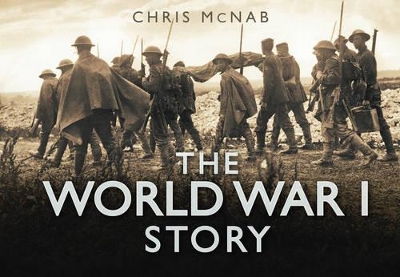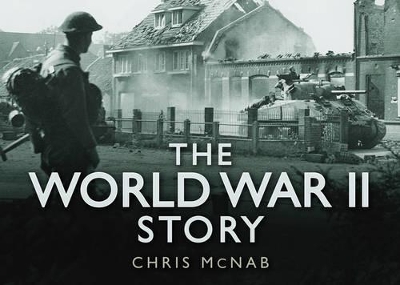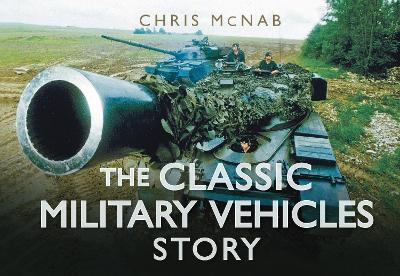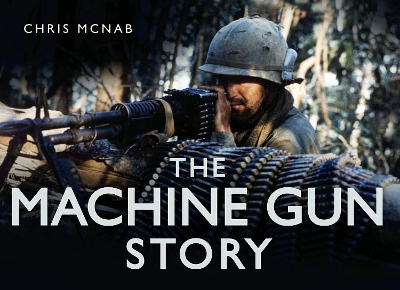Story
4 total works
On 28 June 1914 Archduke Franz Ferdinand of Austria was assassinated, an event which sparked off a war that was to change the lives of millions of people around the world. Over 70 million military personnel were mobilised, more than 9 million combatants were killed. Entire generations of young men from towns and villages across Europe were wiped out. The fighting involved all of the great powers of the day, including the Americans, Canadians, Australians, Russians and the British Empire. World War I saw a significant change in the way wars were fought, as the cavalry charge and 'staged' battles were consigned to history, making the way for a complex system of trenches, heavy artillery, machine-guns and poison gas. Troops learnt to exist for months in confined spaces, fighting bitter battles to push their line forward by a few hundred yards. The war changed the fact of Europe forever, virtually destroying the Austro-Hungarian and Ottoman Empires. On 11 November 1918 Germany agreed to a cease-fire, a moment that has become enshrined in public remembrance to this day. The World War I Story is the perfect pocket narrative of one of the largest conflicts in human history: the Great War.
In September 1939 Hitler's Nazi Germany invaded Poland, sparking international condemnation and declarations of war on Germany from France and most of the British Empire and Commonwealth. Thus, one of the greatest wars in history began. World War II witnessed the mobilisation of more than 100 million military personnel. This was 'total war' on a scale that had not been previously experienced by any of the countries involved. The war eclipsed everything: industry, technology, the economy and home life. It changed generations of men and women, who grew up under the shadow of war. It encompassed theatres of warfare fromt he desert to the skies, from the sea to swathes of land across Europe and Russia. It was the deadliest conflict in human history wtih the loss of 50 million and over 70 million people and saw the only use of nuclear weapons in warfare to this day. The World War II Story charts the narrative of the war and the impact it had on human life and history.
The mobilisation of troops and equipment has always been crucial to winning a war. During the twentieth century, the days of horse-drawn logistics and cavalry charges gradually became a thing of the past, and the age of military vehicles began.
This book charts the development of military vehicles from steam-powered tractors to modern main battle tanks. The story reveals how such vehicles have changed the way wars are fought, either by increasing the speed and volume of logistics or troop deployments, or through the application of mobile firepower. The narrative explains key technical innovations from World War I, through the inter-war years to World War II, the Cold War and beyond. It pays homage to outstanding designs and those that are remembered with fondness, including the M3 Lee/Grant, T-34, Panther, Tiger, M1 Abrams, Chieftain and M4 Sherman tanks; the Bren Gun Carrier, the Willys `Jeep’, the Dodge truck; through to the modern `Humvee’ and Stryker, and many more.
This book charts the development of military vehicles from steam-powered tractors to modern main battle tanks. The story reveals how such vehicles have changed the way wars are fought, either by increasing the speed and volume of logistics or troop deployments, or through the application of mobile firepower. The narrative explains key technical innovations from World War I, through the inter-war years to World War II, the Cold War and beyond. It pays homage to outstanding designs and those that are remembered with fondness, including the M3 Lee/Grant, T-34, Panther, Tiger, M1 Abrams, Chieftain and M4 Sherman tanks; the Bren Gun Carrier, the Willys `Jeep’, the Dodge truck; through to the modern `Humvee’ and Stryker, and many more.
Warfare truly entered the industrial age with the invention and adoption of the machine gun. Armed with a machine gun, one or two men could potentially hold off a whole company of enemy soldiers, and inflict terrible losses while doing so.
The Machine Gun Story describes how Hiram Maxim’s invention in the late 19th century went on to transform the ways that armies and also air forces fought. Each stage in the technical development of machine guns is clearly explained, and the book also explores how submachine guns developed as a more portable offshoot, with their own set of consequences. While the tactical implications of machine guns are explored, the book never shrinks from the dark history of how machine guns have been used, whether fired from a trench on the Western Front in WWI or from a helicopter circling over the jungles of Vietnam.
Chris McNab has written widely on the development and use of weapons in warfare throughout history.
The Machine Gun Story describes how Hiram Maxim’s invention in the late 19th century went on to transform the ways that armies and also air forces fought. Each stage in the technical development of machine guns is clearly explained, and the book also explores how submachine guns developed as a more portable offshoot, with their own set of consequences. While the tactical implications of machine guns are explored, the book never shrinks from the dark history of how machine guns have been used, whether fired from a trench on the Western Front in WWI or from a helicopter circling over the jungles of Vietnam.
Chris McNab has written widely on the development and use of weapons in warfare throughout history.



